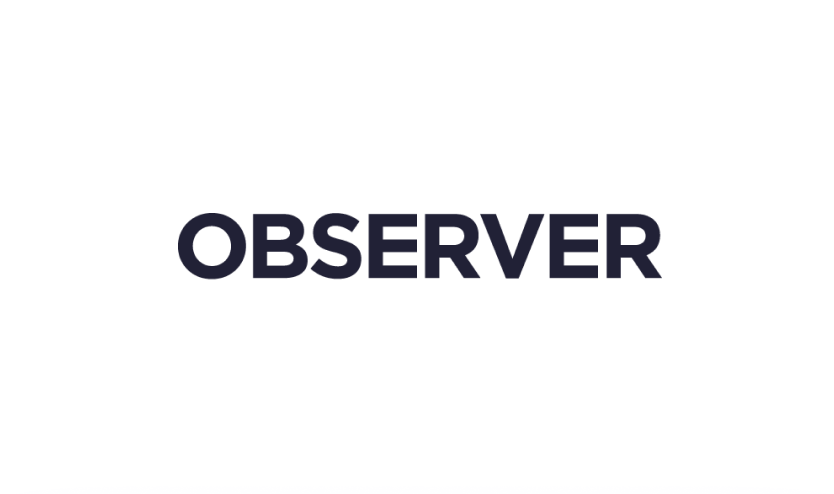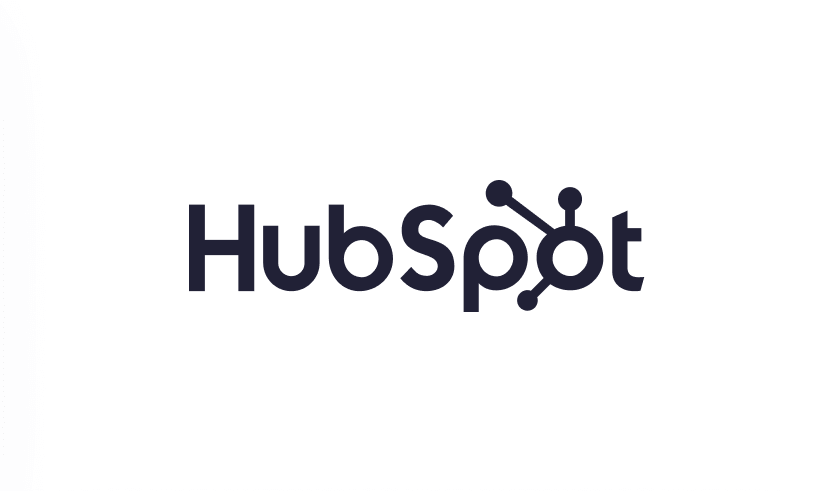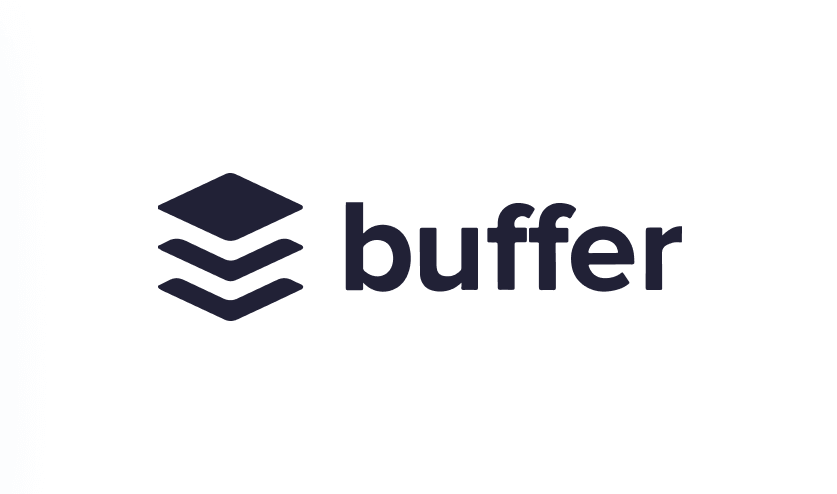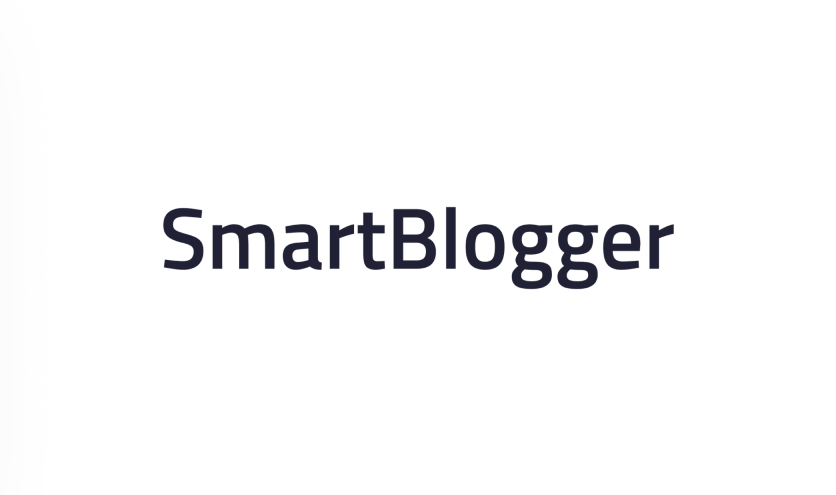Ecommerce Email Copywriting: Your Step-by-Step Revenue Guide
Why Ecommerce Email Copywriting Transforms Businesses
For many online stores, email often gets treated like just another task on a long marketing to-do list. But this view overlooks a crucial point: good ecommerce email copywriting is far more than just sending out messages. It’s about creating your most direct, and often most profitable, link straight to your customers' spending power. Companies that truly get this right often see themselves quietly pulling ahead of the competition.
The High Return on Investment Through Email
Email marketing consistently delivers an impressive return on investment (ROI). Research indicates that for every dollar put into email marketing, businesses can see a return of $36 to $42. This impressive return isn't just by chance; it gets a significant boost when combined with thoughtful ecommerce email copywriting. Skillfully written copy, which uses established methods to tap into customer thinking, can turn a basic email into a persuasive sales discussion, guiding subscribers smoothly towards a purchase.
This direct access to both prospective and current customers enables personalized messages that connect deeply. Rather than shouting to a large, often uninterested crowd, email lets brands talk one-on-one with people who’ve already shown they’re listening. This focused interaction is a major reason why email can bring in such strong financial results and better conversion rates.
The Psychology: Why Emails Drive Purchases
Figuring out why people make purchases through email is essential to making the most of it. It’s not simply about displaying products; it's about earning trust, communicating at the right moment, and providing specific value to people who are already paying attention. Consumer preference heavily influences the rise of ecommerce email marketing. Actually, more than 72% of consumers prefer email for communications from brands, ranking it higher than social media. Moreover, 81% of small and medium-sized businesses rely on email as a key method for attracting new customers, highlighting its importance for business expansion. You can discover more insights about these email marketing statistics and their impact on businesses.
Emails arrive in a very personal place – the inbox. When ecommerce email copywriting is effective, it honors this private space. It can tackle particular customer problems, provide solutions when they're needed most, or present products in a manner that feels like useful advice instead of a pushy advertisement. This approach helps build a stronger connection, easing the journey from someone just looking to someone making a purchase.
Crafting Connections, Not Just Campaigns
Sending out generic, mass-produced promotional emails is a quick way to end up in the spam folder and lose out on considerable revenue. The real strength of ecommerce email copywriting is in making messages feel personal, worthwhile, and even something people look forward to receiving. It involves truly grasping the customer's path and providing content, like welcome messages or reminders for abandoned carts, that directly addresses their immediate needs, wants, and any hesitations they might have.
Think about the companies that generate multi-million dollar revenues almost entirely from their email efforts; they're not just blasting out standard offers. They use particular writing approaches to share stories, offer real solutions, and create a sense of anticipation. Their emails focus less on aggressive selling and more on starting a meaningful interaction, making every message seem specially designed for the person receiving it. This move from broad messages to personalized, relevant discussions is what turns an email list into a reliable and very effective source of income.
Beyond Names: Personalization That Actually Converts
Lots of online stores think they're doing personalization by just popping a customer's first name into an email. But honestly, that's just scratching the surface of what real personalization can do for your ecommerce email copywriting. To really connect with people and get them to buy, your emails need to feel like they were written just for them, not like a mass message with a name slapped on.
So, what is true personalization then? It’s way more than just a name. It's about smartly using information like what customers have bought before or what they’ve been looking at on your site. This way, your emails can speak directly to their needs and what they like, making them feel understood and important.
The Psychology Behind Why Personalization Sells
Why does this kind of personalization actually work to sell things? Well, it plays into some basic human psychology. When an email shows you get a customer's specific interests or remembers their past dealings with your brand, it tells them you're paying attention. This makes them feel important and that the message is relevant, so they're much more likely to listen to what you have to say.
Think about it – instead of a generic email blast, a personalized one feels more like a direct conversation. It can make customers wonder, "Wow, how did they know that’s exactly what I was looking for?" It’s this feeling of being personally looked after that really bumps up engagement and, yep, sales. The idea is to make your customer feel seen, not just like another sales target.
Leveraging Customer Data for Compelling Narratives
The real magic in ecommerce email copywriting happens when you turn customer data into interesting stories. Every bit of information – a product someone looked at, something left in their cart, a past purchase – is a clue about what they want or what problems they're trying to solve. For instance, if someone keeps checking out a certain product category, an email about new items in that category, or one that explains the cool benefits of a specific product they viewed, will feel super relevant.
Email marketing is still a huge deal for ecommerce, especially when you personalize it. Did you know that 44% of marketers use data from past email interactions to make their content better? And 68% use profile info like names or company details. These kinds of focused approaches have been shown to get 13% more clicks and increase revenue by a whopping 41%. You can dig into more stats on email marketing over at Omnisend. This really shows that using data well isn't just a nice-to-have; it seriously helps bring in more money.
Scaling Personalized Copy: Frameworks and Strategies
Trying to do advanced personalization for everyone might sound like a massive job, but there are good ways to manage it without your team getting swamped. Segmentation is where you start. This just means grouping your customers based on things they have in common, like their behavior or characteristics. For example, you could group them by:
Purchase history: Think new customers, loyal repeat buyers, or your VIPs.
Browsing behavior: Like folks who looked at specific product pages but didn’t end up buying.
Engagement levels: Subscribers who open all your emails versus those who haven't clicked in a while.
Once you have these groups, you can use dynamic content blocks within your emails. This means different subscribers see different bits of content within the same email, all matched to their particular segment. Having a solid ecommerce email marketing strategy is super important to make this all run smoothly. If you're looking to up your game, you might want to check out how to master your ecommerce email marketing strategy to boost engagement and sales.
Common Personalization Pitfalls to Avoid
Now, while personalization is pretty powerful, it can go wrong if you're not careful. A common slip-up is over-personalization. This is when emails have so much specific info that they come off as a bit creepy or intrusive, instead of helpful. Another big no-no is using inaccurate or outdated data; that just breaks trust right away and makes your brand look sloppy.
So, how do you steer clear of these problems? Here are a few tips:
Focus on relevance: Make sure the data you're using actually makes the customer's experience better.
Prioritize accuracy: Keep your customer data clean and up-to-date.
Test and iterate: Pay attention to how your audience reacts to different kinds and levels of personalization, and adjust accordingly.
At the end of the day, the main goal of using personalization in your ecommerce email copywriting is to offer genuine value. When you get it right, it’s about much more than just using names; it’s about creating experiences that don’t just lead to sales, but also build real, lasting customer loyalty.
Turning Cart Abandoners Into Loyal Customers
For online stores, emails aimed at cart recovery are a huge, often overlooked, chance to make more money. With average cart abandonment rates around 70%, it’s obvious that a large number of potential sales don't get completed. The trick to winning these shoppers back isn't just sending a reminder. It's about figuring out why they hesitated and using smart ecommerce email copywriting to bring them back, which can often lead to a stronger customer bond.
The Psychology Behind Why Carts Are Left Behind
Before you can write persuasive recovery emails, you need to know why shoppers leave items in their carts. It's usually not just one thing; it's often a combination of reasons. Some shoppers are just looking around, comparing prices, or saving items for a later time. But many abandoned carts are due to problems that can be fixed.
Here are some common reasons:
Unexpected costs: High shipping charges or surprise taxes at checkout are a major reason, causing over 50% of abandonments.
Complex checkout process: A long or confusing checkout can annoy users, making them give up.
Forced account creation: Many shoppers like to check out as guests and will leave if they have to create an account.
Payment security concerns: If a website doesn't look secure, users will be reluctant to enter their payment information.
Knowing these sticking points helps your ecommerce email copywriting address possible concerns before they become deal-breakers. This knowledge changes a simple reminder into a helpful prompt.
Crafting Emails That Recapture Attention and Sales
A good cart abandonment email series does more than just list the items left behind. It tries to ease worries and give strong reasons to finish the purchase. Your writing should be understanding and focused on solutions. Begin with a subject line that’s clear, interesting, and maybe adds a soft touch of urgency.
Think about including these main parts in your emails:
Acknowledge and Remind: Gently remind them of the products they liked, perhaps by showing pictures.
Address Objections: If high shipping costs are a frequent problem, think about offering free shipping or a discount in the email.
Create Scarcity (Authentically): Let them know if items are nearly out of stock, but don’t use fake pressure.
Provide Support: Offer assistance through chat, email, or a link to FAQs to clear up any remaining questions.
Clear Call-to-Action: Make it simple for them to go back to their cart with an easy-to-see button.
To help you gauge the effectiveness of different approaches, the table below compares various abandoned cart email strategies, detailing their performance in terms of open rates, click-through rates, and conversion percentages.
This comparison shows that a multi-email sequence, tailored to address different potential concerns and motivations, generally yields better results than a single reminder. The initial email often has the highest open rate due to its timeliness, while subsequent emails with incentives or social proof can drive higher conversion rates.
To get a feel for the typical performance metrics your ecommerce email copywriting will be working with, look at these general benchmarks:
This graphic shows that while many emails get opened, the path to actual sales needs strong writing and clear calls-to-action every step of the way. Successfully recovering abandoned carts can greatly improve these conversion figures. You might find this useful: How to set up a high-converting abandoned checkout flow with examples.
In the end, changing cart abandoners into loyal customers depends on careful ecommerce email copywriting that understands their experience. These emails aren't just about getting a sale back; they're a chance to build trust and highlight the value your brand provides, possibly turning a moment of doubt into a long-term customer relationship.
Metrics That Matter: Measuring Copy Success
It's easy to get excited about high open rates and click-through rates (CTRs), but let's be honest, those don't automatically lead to sales. For truly effective ecommerce email copywriting, the real success is found in numbers that directly boost your revenue. Moving your attention from these often-called vanity metrics to ones that signal profitable growth is a must for any serious ecommerce brand.
Key Performance Indicators Beyond Opens and Clicks
To genuinely grasp how well your email campaigns are performing, you need to dig a bit deeper. The conversion rate – which is the percentage of email recipients who actually complete a desired action, like making a purchase – is a much more revealing figure. In the ecommerce world, solid email marketing metrics are crucial for measuring success; 26.5% of email marketing professionals prioritize conversion rates, and another 24% focus on CTRs. For retail and ecommerce, average open rates are around 18.8% and CTRs at 2.6%, but thoughtfully written emails, like those for abandoned carts, can bump up revenue, sometimes by as much as 20%. You can explore this topic further for more detailed statistics on email marketing effectiveness.
Beyond just conversion rates, you should also keep an eye on these important metrics:
Revenue Per Email (RPE): This tells you exactly how much revenue, on average, each email you send brings in. It gives a straightforward look at an email's financial impact.
Average Order Value (AOV) from emails: By tracking the AOV of purchases that come from your emails, you can see if your copy is successfully prompting customers to spend more.
Customer Lifetime Value (CLV) influenced by email: Good ecommerce email copywriting helps build relationships, which can increase the total amount a customer spends with your brand over time.
Establishing Benchmarks and Tracking Performance
To understand how you're doing, you need some context. While industry averages can give you a general idea, your own past data is incredibly useful for setting achievable benchmarks. Setting up tracking correctly within your email service provider and analytics platform is key to accurately measuring your copy's effect. This means making sure your links are tagged right and your conversion goals are well-defined.
This regular tracking lets you spot trends, figure out what’s clicking with your audience, and identify spots where your ecommerce email copywriting strategy could use some work. Watching these metrics over time gives the clearest view of how healthy your email program is and how much it's helping your business grow.
The Power of A/B Testing in Email Copywriting
If you want to keep making your ecommerce email copywriting better, A/B testing (or split testing) is a tool you can't do without. This simply means sending two different versions of an email to separate parts of your audience to see which one performs better. Some key things to test include:
Subject lines: Try out different lengths, tones, the use of emojis, personalization, or creating a sense of urgency.
Body copy: Play around with different storytelling methods, lengths, ways to highlight benefits, or unique value propositions.
Calls-to-Action (CTAs): Test different wording, button colors, sizes, or where you place them.
For A/B test results to be dependable, they need to be statistically significant. This usually means you need a big enough group of people in your test and to let the test run for a good amount of time. Don’t jump to conclusions based on small numbers or short tests. While data gives you important clues, sometimes your own understanding of your audience and brand—your "instincts"—can help guide your testing ideas. The main idea is to make well-grounded decisions that consistently improve your email performance and, ultimately, your sales.
From Subject Line To Sale: Writing That Converts
Even the best ecommerce email copywriting in the world won't make a dent in your sales if people aren't opening your emails. The path from a subscriber's busy inbox to a confirmed purchase starts with a killer subject line. It then flows through engaging body content that guides them smoothly to your call-to-action, striking a careful balance to spark interest and provide real value at every turn.
Crafting Subject Lines That Demand an Open
Think of your subject line as the bouncer for your email's content. Inboxes are packed, and people often give an email just a few seconds before deciding to open or ignore it. This means your subject line absolutely must be relevant, interesting, and appealing enough to get that all-important click.
Here are a few ways to make that happen:
Mix Curiosity with Clarity: A little mystery can be tempting, but don't be so vague that people have no idea what's inside. "Your Next Favorite Outfit Awaits..." is good, but "Your Next Favorite Outfit Awaits... Inside: New Summer Styles!" is even better because it adds clarity.
Tap into Psychology: Create a sense of urgency like "Sale Ends Tonight!" or make it feel exclusive with "A Special Offer Just For You, [Name]". These tactics can really push up your open rates. In fact, some studies show personalized subject lines are 26% more likely to be opened.
Keep It Short and Sweet: Try to keep your subject lines under 10 words. Shorter lines are easier to read on mobile devices and can be understood in a flash.
Stay Out of the Spam Folder: Avoid using ALL CAPS, making wild claims ("You've Won!"), or using words that trigger spam filters. Being genuine is the way to go.
And don't forget the preview text! That little snippet of text appearing after the subject line in most email clients is prime real estate. Use it to build on your subject line and offer another solid reason to open the email.
Writing Body Copy That Keeps Them Reading
Okay, so your brilliant subject line got them to open the email. Now, the body copy needs to live up to the hype and keep them hooked. Ideally, every email should aim for one primary goal, whether that’s showing off a new product, announcing a sale, or sharing some useful content. This sharp focus helps your reader clearly understand what you'd like them to do next.
A great way to structure your email body is using the inverted pyramid method. This just means you put the most important stuff right at the top, followed by supporting details, and then finish with your call-to-action. This way, even people who just skim your email will get the main point. Always make your copy more about the shopper and less about your brand; present features as benefits that solve their problems or meet their desires. For example, instead of "Our new shoes have advanced cushioning," try "Run in total comfort with the advanced cushioning in our new shoes."
Keep your tone conversational and friendly, and use "you" often to make the email feel more personal. The best length for an email can change; product updates might be short and snappy, while newsletters or how-to guides could be longer. No matter the length, always focus on delivering clarity and value.
Designing Calls-to-Action That Convert
The call-to-action (CTA) is where you point your reader towards the action you want them to take. It should feel like a natural conclusion, not a hard sell.
To make your CTAs really work, make sure they are:
Clear and To-the-Point: Use action-packed words like "Shop Now," "Grab Your Discount," or "Find Out More."
Easy to Spot: Your CTA button should really pop with contrasting colors and enough space around it.
Placed Smartly: Put your CTA where your reader is most likely ready to act, usually right after you've laid out the value or the offer.
The main idea is to make it super obvious what they should do next, and incredibly easy for them to do it.
To give you a clearer picture of how different parts of your email copy can affect your results, take a look at this guide.
Email Copy Elements Performance Guide
This table offers a data-driven comparison of various copywriting elements and their impact on key email performance metrics.
The data shows that elements like Personalized Subject Lines and Urgency/Scarcity significantly boost open rates, while Benefit-Driven Headlines and a Clear & Single CTA are crucial for click-throughs and conversions. Focusing on these details can make a big difference.
By carefully putting together each part of your ecommerce emails, from the very first hook of the subject line to that final click on the CTA, you can really boost engagement. This approach helps turn more of your subscribers into loyal, paying customers. Just remember to tweak these tried-and-true methods to fit your unique brand voice and what your customers expect.
Lifecycle Copywriting: Right Message, Right Time
Think of your customers – they aren't just standing still. They're on a journey with your brand, and smart ecommerce email copywriting taps into that. It’s all about sending the right message at the right moment, helping guide someone from just browsing to becoming a true fan.
This idea, called lifecycle copywriting, means changing up your words, your tone, and what you offer to match where each customer is in their relationship with you. When you get this right, your emails really connect and get people to act.
Nurturing Newcomers: The Welcome Series
That first "hello" really counts, doesn't it? Your welcome email series is your big chance to make a stellar first impression. The main aim is to let new subscribers know what to expect, show off your brand's personality and what you stand for, and softly nudge them towards making that first buy.
Your writing should feel warm, welcoming, and full of useful info, making people feel like they’ve just stepped into a cool club.
When putting together your welcome emails, think about including:
A big, friendly greeting: Kick things off with a genuine welcome that shows you're happy they signed up.
A quick brand intro: Briefly tell them what your brand is all about and what sets you apart.
The perks of joining: Clearly spell out why being on your email list is a good thing (think exclusive deals, early looks at new stuff, or handy tips).
Setting the scene: Let them know what types of emails are coming their way and how often.
A little welcome gift: Maybe offer a small discount or free shipping on their first purchase to get them engaged right away. This is a neat way to tap into the principle of reciprocity.
For instance, a subject like "Welcome to the [Brand Name] Crew! Your Journey Begins Now" could lead into an email saying something like, "You're officially in a community that cares about [key brand value] and you get early access to [exclusive benefit]."
Building Bridges: Post-Purchase Perfection
After someone buys from you, your ecommerce email copywriting changes gears. Now, it's about making them feel good about their purchase and starting to build that long-term connection. Post-purchase emails are super important for making customers feel secure, easing any second thoughts, and keeping them interested.
Your tone here should be thankful and helpful. Good post-purchase messages usually cover:
Confirming the order and saying thanks: Right away, let them know the order is confirmed and genuinely thank them. Something like, "Thanks for your order, [Customer Name]! We’re already getting it ready for you," is great.
Keeping them in the loop on shipping: Update them on where their order is to build confidence.
More than just the item: Share tips on using or looking after their new purchase, or show off photos from other happy customers. This adds value past the sale itself.
Gentle suggestions for more: You can suggest related products, but only after you've given them some useful info first.
Asking for their thoughts: Once they've had a chance to try out the product, nicely ask for a review.
These kinds of emails show you're invested in their happiness even after they've paid. That's a huge part of creating customers who stick around.
Rekindling Connections: Re-Engagement Campaigns
Let's face it, some customers will drift away over time – it just happens. Re-engagement campaigns, sometimes called win-back campaigns, are your way to try and bring those quiet subscribers back into the fold. Your writing here should feel understanding, maybe a bit curious, and often include a good offer to tempt them.
The key is to note they've been gone, but not in a way that sounds like you're blaming them. Some phrases that often hit the mark for re-engagement include:
Noticing they've been away: "We've missed seeing you around, [Customer Name]!" or something like "Is this farewell?" (though use this one carefully and make sure to give clear choices).
Showing off what's new: Point out any cool new products, features, or brand news they might not have seen.
A special comeback offer: A unique discount can really do the trick. For example, "Just for you, to welcome you back: Take 20% off your next order."
Asking for their two cents: Sometimes, simply asking why they haven't been around can give you some really useful feedback.
And always, always make it simple for them to change their email settings or unsubscribe if they're not interested anymore. Respecting their decision is important, much like the idea behind the "But You Are Free" technique.
Celebrating Your Champions: VIP Program Copy
Your top customers, the ones who stick with you, really deserve a bit of extra attention. VIP program emails are designed to make these fantastic folks feel truly special and valued. The ecommerce email copywriting for these messages needs to feel exclusive and celebratory.
It should clearly lay out all the awesome perks of being a VIP. This approach helps to create a sense of exclusivity and keeps them loyal and talking about your brand.
When writing for your VIPs, try using:
Words that feel special: Think "VIP Access," "Exclusive Reward," or "Just For You."
Clearly stated perks: Spell out the benefits, like getting to sales early, special discounts, freebies, or even their own support line.
Heartfelt thanks: Genuinely express your appreciation for their ongoing support. Something like, "Because you're one of our most cherished customers, we want to give you..."
Building a community: If it fits, invite them to a special group or online space just for VIPs.
Cohesive Messaging and Automation at Scale
Handling all these different messages throughout a customer's entire experience with your brand takes a smart mix of automation and good ecommerce email copywriting. Automation tools are great for sending emails at just the right moment, but the words inside those emails need to feel real and human.
Your brand's overall voice should stay the same, even if your tone changes – from that first excited welcome to a thankful message for your VIPs. You can find more insights on how to refine your ecommerce email sequences for every part of the customer journey here.
By carefully adjusting your messages with specific wording for each phase, you help customers move smoothly along their path with your brand. This is how you turn someone who buys once into a long-term supporter.
Key Takeaways
Turning your email efforts from basic messages into a serious income source relies on using effective ecommerce email copywriting methods. This guide breaks down the essential ideas into straightforward, practical actions you can use right away to see noticeable improvements in your online store's performance.
Actionable Steps for Immediate Impact
To begin seeing real gains in how your emails perform, concentrate on improving these vital components:
Personalize with Purpose: Don't just stop at using a customer's first name. Use customer information—like what they've bought or looked at—to create messages that feel truly specific to them and address their unique needs. Smart personalization can boost click-through rates by 13% and revenue by 41%.
Master Cart Abandonment Recovery: It's not enough to simply remind shoppers about items they left behind. Figure out why they didn't complete the purchase and apply your ecommerce email copywriting skills to address their concerns, offer solutions, and give strong reasons to finish buying. A well-designed series of emails can bring back a good chunk of those almost-lost sales.
Craft Irresistible Subject Lines: Your subject line is the first hurdle. Aim for a mix of intrigue and clearness, stir some emotion, and build urgency in an honest way to get more people to open your emails. Always remember, if they don't open it, they can't purchase anything.
Write Engaging, Benefit-Driven Body Copy: Once your email is opened, it needs to keep the reader's attention. Organize your content logically (the inverted pyramid style is often effective), aim for one main goal for each email, and consistently emphasize how your product or service directly helps the customer.
Drive Action with Clear CTAs: Your call-to-action needs to be perfectly clear and persuasive. Use words that encourage action and make sure it's visually prominent, so subscribers can easily move to the next step.
Implement Lifecycle Messaging: Deliver the appropriate message at the appropriate moment. Adjust your ecommerce email copywriting for welcome emails, follow-ups after a purchase, campaigns to re-engage customers, and communications for VIPs to guide customers throughout their entire experience with your brand.
Auditing Your Current Emails: A Quick Checklist
Carefully review your current emails with this checklist to pinpoint areas where you can make quick improvements:
Personalization Depth: Does your personalization go deeper than just a name? Are you using data about customer behavior well?
Subject Line & Preview Text: Do they create interest and accurately describe the email's content without being deceptive? Are they designed to look good on mobile devices?
Clarity of Purpose: Does every email have a single, clear aim?
Customer Focus: Is the writing centered on what customers gain and how their problems are solved, rather than just listing product features?
Cart Abandonment Strategy: Is your email sequence timed effectively? Does it tackle usual objections and provide clear ways for customers to return and buy?
Call-to-Action Effectiveness: Is your CTA singular, easy to see, and focused on action?
Mobile Responsiveness: Is your email easy to read and use on any device?
Lifecycle Stage Relevance: Does the message fit where the customer is in their journey (e.g., new subscriber, recent purchaser, inactive customer)?
Metric Tracking: Are you regularly tracking metrics that show revenue, such as conversion rate and revenue per email?
Building Sustainable Systems for Consistent High-Converting Copy
Getting steady results with ecommerce email copywriting is more than just running occasional campaigns; it’s about setting up dependable processes.
Develop Core Templates: Make basic templates for important automated emails (like welcome, abandoned cart, post-purchase, and win-back messages). These offer a consistent framework and brand tone, which saves time but still lets you add important personal touches and adjust the message.
Establish a Clear Process: Put a straightforward workflow in place for writing email copy:
Define the Goal: What outcome should this email produce?
Identify the Audience Segment: Who is this message for?
Draft Compelling Copy: Concentrate on the advantages for the customer and a clear story.
Review and Refine: Check for clearness, appropriate tone, and any mistakes. If you can, have someone else look it over.
Test and Measure: Always look for opportunities to make it better.
Maintain Quality Control: Use a style guide to keep your brand voice consistent. Regular, even short, reviews can find errors and help keep your messaging accurate.
Prioritizing Improvements and Measuring Success
Direct your energy to where it will yield the greatest results. Begin by enhancing emails that have the biggest potential to generate revenue, like your cart abandonment sequence or welcome series. Give priority to testing parts that most directly affect sales, such as your CTAs, special offers, and the main value proposition in your ecommerce email copywriting.
Make sure to measure what truly matters. Move your attention from less critical numbers like open rates (though still useful for initial interaction) to performance indicators that directly show revenue, such as:
Conversion Rate: The percentage of email recipients who make a purchase.
Revenue Per Email (RPE): The typical amount of revenue made from each email sent.
Average Order Value (AOV) from Email: The average value of purchases that come through email.
Continuously A/B test various elements of your ecommerce email copywriting, including subject lines, body content, and offers. Use the information gathered to learn what connects best with your particular audience and to improve your methods over time. This ongoing adjustment is crucial for achieving lasting growth through email.
Ready to stop missing out on potential sales and turn your email marketing into an income-producing powerhouse?
My strategies are proven, supported by data, and created to maximize your return on investment.


























